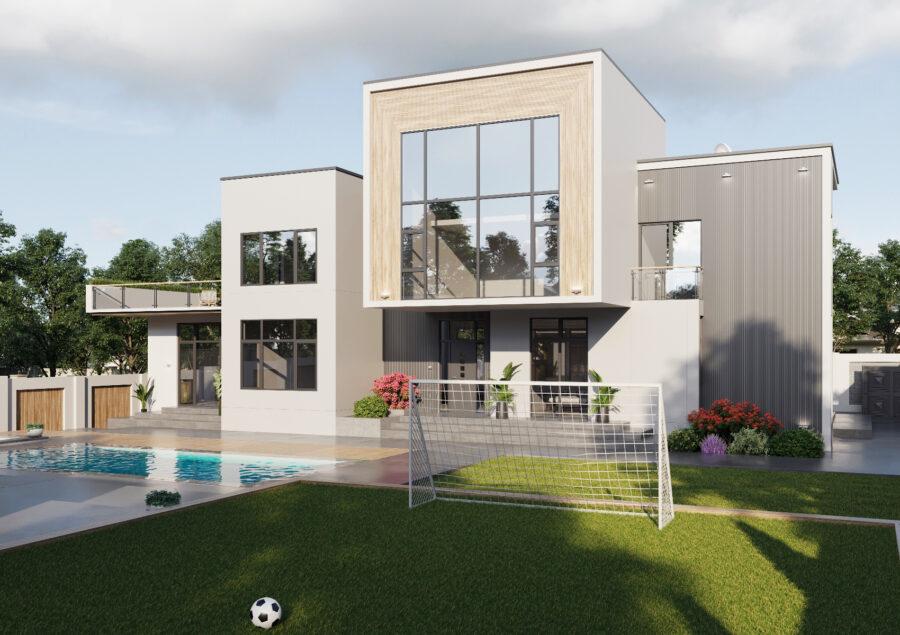Eco-architecture, or sustainable construction, is becoming a significant part of Kazakhstan’s construction industry. This architectural approach aims to create buildings that meet the needs of modern society while being mindful of the environment. Today, eco-architecture is shaping the appearance of many Kazakh cities, and its popularity is growing thanks to new technologies and design approaches. This article explores why sustainable construction is not just a trend but the future of architecture in Kazakhstan, discussing key principles and examples of green technologies in architecture.
1. Eco-Architecture in Kazakhstan: Understanding and Principles
Eco-architecture focuses on minimizing the environmental impact of construction. This approach involves designing buildings that are adapted to the climate, landscape, and human needs. In Kazakhstan, where nature and traditions play a significant role, this approach holds particular importance. Key principles of eco-architecture include reducing energy consumption, using renewable materials, and incorporating technologies that lower a building’s carbon footprint.
The main principles of eco-architecture include:
- Energy Efficiency – Buildings are designed to consume minimal energy for heating, cooling, and lighting.
- Use of Renewable Materials – Low-carbon materials like wood, clay, and recycled construction materials.
- Smart Resource Management – Utilizing technologies to monitor and control water and energy consumption.
- Utilization of Local Natural Resources – Adapting buildings to the local climate and terrain to enhance energy efficiency.
2. The Future of Architecture: Sustainable Construction and its Prospects
The future of architecture in Kazakhstan is tied to sustainable construction. In recent years, both the government and private developers have actively supported projects that align with global standards in ecology and sustainability. With growing interest in green technologies and increased investment in eco-friendly projects, sustainable construction is becoming a vital component of Kazakhstan’s national strategy.
In the future, Kazakh architecture is likely to become even more focused on energy efficiency and environmental friendliness. Forecasts show that renewable energy sources like solar panels and wind turbines will be widely incorporated into buildings across Kazakhstan, reducing the burden on the country’s natural resources and decreasing carbon emissions.
3. Green Technologies in Kazakhstan’s Architecture
Kazakh architects are actively integrating green technologies into their projects. These technologies enable buildings to consume fewer resources and contribute to improved environmental conditions in cities. Examples include:
- Solar Panels and Rainwater Collection Systems – To create autonomous energy and water supplies.
- Energy-Efficient Windows and Insulation – Reducing heat loss.
- Green Roofs and Facades – Improving microclimates, purifying air, and lowering indoor temperatures in summer.
- Automated Management Systems – For real-time monitoring of energy and water use.
These technologies are already being applied in major cities like Almaty and Astana. For example, modern business centers and residential complexes are equipped with smart energy management systems that automatically regulate lighting and temperature, reducing electricity consumption and enhancing comfort.
4. Examples of Sustainable Architecture Projects in Kazakhstan
Several projects in Kazakhstan showcase modern eco-design trends and confirm the growing interest in sustainable construction. These projects are not only examples of modern architecture but also demonstrate how eco-architecture can work within Kazakhstan’s conditions.
- Project 1: “Green Office” in Almaty
A notable example of green technology use, the “Green Office” building features solar panels, automatic lighting controls, and motion sensors to manage energy consumption. A green facade and roof help improve the microclimate and reduce the need for air conditioning in the summer. - Project 2: “Eco-House” Residential Complex
The “Eco-House” complex was built using energy-efficient solutions, including insulation, energy-saving windows, and a rainwater collection system used for landscaping around the complex. This building exemplifies a new approach to residential development that minimizes environmental impact and enhances residents’ quality of life.
5. Eco-Design Trends: What’s Relevant in Kazakhstan
As eco-architecture evolves, Kazakhstan is moving toward buildings that combine functionality, comfort, and sustainability. In 2024–2025, eco-design trends include:
- Multi-Level Green Zones – Architects are integrating nature into designs with multi-level gardens, green walls, and roofs.
- Use of Natural Lighting – Larger windows and transparent facades help maximize daylight as the primary light source.
- Energy-Saving Heating and Cooling Systems – Buildings are designed with climate in mind, reducing the need for air conditioning and heating.
- Use of Recycled Materials – Many materials are recycled and reused, easing the environmental load.
- Social and Public Spaces – Emphasis on shared areas for social interaction and relaxation improves living standards and fosters community.
6. Benefits of Sustainable Architecture for Kazakhstan
Eco-architecture provides numerous benefits for both the environment and the national economy. Primarily, sustainable construction reduces energy and resource consumption, making these buildings more cost-effective in the long run. Eco-architecture also contributes to a healthy, comfortable environment for residents, positively impacting overall living standards in Kazakhstan.
From an economic perspective, sustainable buildings help reduce maintenance and operating costs while attracting more investments. Eco-architecture makes Kazakhstan more appealing to foreign companies and tourists by demonstrating a commitment to ecological standards and sustainable development.
7. Challenges and Prospects for Sustainable Construction in Kazakhstan
Despite its advantages, eco-architecture faces some challenges in Kazakhstan. These include high construction costs and a shortage of skilled professionals who can develop and implement complex eco-projects. However, support from the government and growing interest in sustainable construction create favorable conditions for the industry’s growth.
Each year, more companies and private investors are willing to invest in projects that align with sustainability principles. This trend suggests that Kazakhstan could become a regional leader in Central Asia in terms of the number of eco-buildings and the adoption of green technologies in architecture.
Conclusion
Eco-architecture is not just a temporary trend but a crucial step toward creating a sustainable future for Kazakhstan. It offers new possibilities for resource conservation, improving quality of life, and maintaining a balance between urbanization and nature. The integration of green technologies and sustainable construction into Kazakhstan’s architecture shows the country’s readiness to keep pace with global standards and support trends aimed at environmental preservation.




